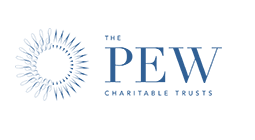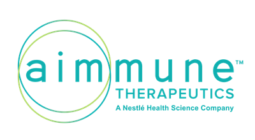What Is
C. Diff?
This spore-forming bacteria occurs naturally in the environment and in the guts of some people. And being treated, particularly with antibiotics, for other illnesses can enable it to grow unencumbered in your colon. Result? Symptoms that are not only uncomfortable but potentially disabling – or even deadly. Check out the video to learn more.
What Can
Be Done?
While Clostridioides difficile infections (CDIs) have been skyrocketing over the past few years, examples from other countries and research done throughout the US demonstrate that change is possible. Peggy Lillis Foundation urges physicians, policymakers and citizens to take the following strategies and actions to reduce CDIs.
Increase Rapid Diagnosis and Treatment of CDI patients
- Doctors can ensure people with CDIs are diagnosed quickly by ordering a C. diff test if the patient has had three or more unformed stools.
- Doctors can keep up to date with new and emerging treatments for patients with CDI.
- Doctors can ensure people with recurrent CDI have access to microbiome restoration therapies.
- Patients and caregivers can monitor CDI symptoms, particularly among populations known to be at risk (e.g., the elderly and immuno-suppressed).
- Healthcare executives and administrators can raise awareness of CDI risk factors to ensure state-of-the-art diagnostics and treatments are available to their patients.
Decrease Overuse and Misuse of Antibiotics
- An estimated 50% of antibiotics prescribed for outpatients are unnecessary, or ineffective because the patient has a virus.
- Eliminate medically necessary antibiotics from use in farm animals. Nearly 80% of all antibiotics sold in the US are used for growth promotion in farm animals.
- Patients can take antibiotics only as prescribed by your doctor and complete the prescribed course.
- Patients can request a narrow spectrum antibiotic for most common infections. Learn more about when antibiotics are and aren’t needed for common infections.
- Patients can stop insisting on an antibiotic for viral infections.
- Physicians can prescribe and use antibiotics carefully. Once culture results are available, check whether the prescribed antibiotics are correct and necessary.
Increase Sanitation and Hand Hygiene
- Early results from hospital prevention projects show the 20% fewer CDIs in less than 2 years with the implementation of correct infection prevention and control measure.
- Health care executives and administrators assess hospital cleaning to be sure it is performed thoroughly and augment this using an Environmental Protection Agency-approved, spore-killing disinfectant in rooms where CDI patients are treated. Click here for a list of EPA approved products known to kill C. diff bacteria.
- Hand washing compliance remains poor among doctors, who practiced it only 60% of the time, and nurses (71% of the time), according to the World Health Organization.
- Healthcare workers can wear gloves and gowns when treating patients with CDI, even during short visits.
- Hand sanitizer does not kill C. difficile, and although hand washing works better, it still may not be sufficient alone, thus the importance of gloves.
- By focusing on hand hygiene, Cleveland’s MetroHealth System reduced infections from 35% – 71% and saved the hospital $5.3 million in excess costs from 2010-2014.
Increase Reporting and Surveillance
- While the Centers for Disease Control has national surveillance programs for CDI, only 20 states mandate reporting of the disease and fewer make that data public.
- Increased reporting and surveillance will enable public health officials to capture true CDI burden in their state and help patients and consumers make informed choices about where to receive healthcare.
- States and communities can encourage health care facilities to track and share data using CDC’s National Healthcare Safety Network.
- States and communities can develop regional CDI prevention projects with many types of facilities. New York, Illinois, and Massachusetts have all reduced CDIs through multi-hospital regional collaborations.
- States and communities can expand reporting and surveillance beyond acute care hospitals to nursing homes, rehabilitation centers, and other health care facilities.
Increase Awareness and Bust Myths
- Physicians can warn their patients about the relative risk of CDI when prescribing antibiotics, antacids, scheduling surgery, during hospital admission, and other events that can precipitate CDI.
- People who’ve had a CDI or a lost a loved one it can take an array of actions to raise awareness of the epidemic by visiting our Take Action page.
- CDI survivors can share their stories to help us show the human impact of the disease.
- Physicians and health care workers can read and share our C. diff Myths page.
About Peggy
Margaret Mary “Peggy” Lillis (nee Daly) was born into a large, Irish-Catholic, working class family in Brooklyn, New York. She married in 1973 and had two sons, Christian and Liam. She separated from her husband in 1979, beginning her life as single mother.
Despite these challenges, in 1987 Peggy earned an Associates Degree in Education and began working for the New York City Board of Education as a paraprofessional. She also waited tables on weekends to supplement her family’s income.
Over the next 15 years, Peggy successfully raised her two sons, while continuing to work as a para and a waitress, and earning a Bachelors Degree in Psychology from Brooklyn College.
A vocal advocate for students in the public education system, Peggy eventually became a Kindergarten teacher and taught for the last six years of her life in Flatbush, while working toward a Master’s Degree at Touro Colege. In 2009, she finally became a homeowner, purchasing a house with her son in Marine Park, Brooklyn. At the time of her death, Peggy was teaching at PS 198, caring for her elderly mother, and planning to spend her retirement between her home in Brooklyn and her long-time partner’s house in Maui.
Peggy Lillis Foundation is grateful to all of our generous supporters.
The following gifts have been received since January 1, 2022. If you believe you’ve been listed incorrectly, please email Erin Burns at erin at cdiff.org.
















